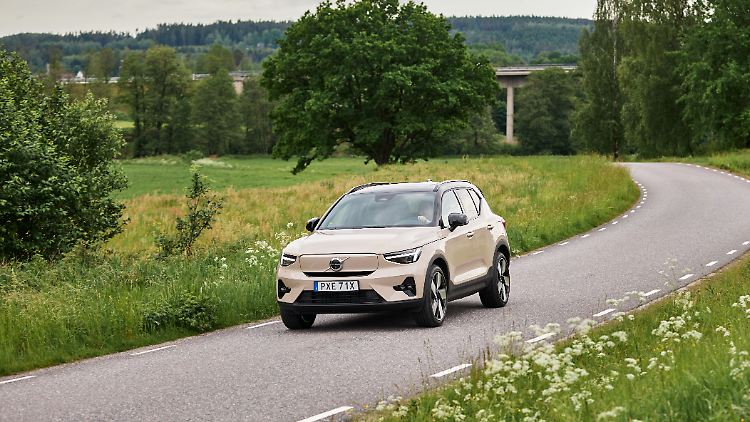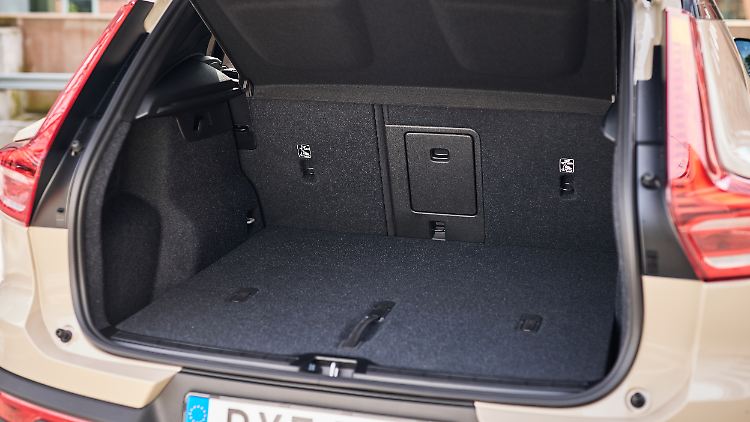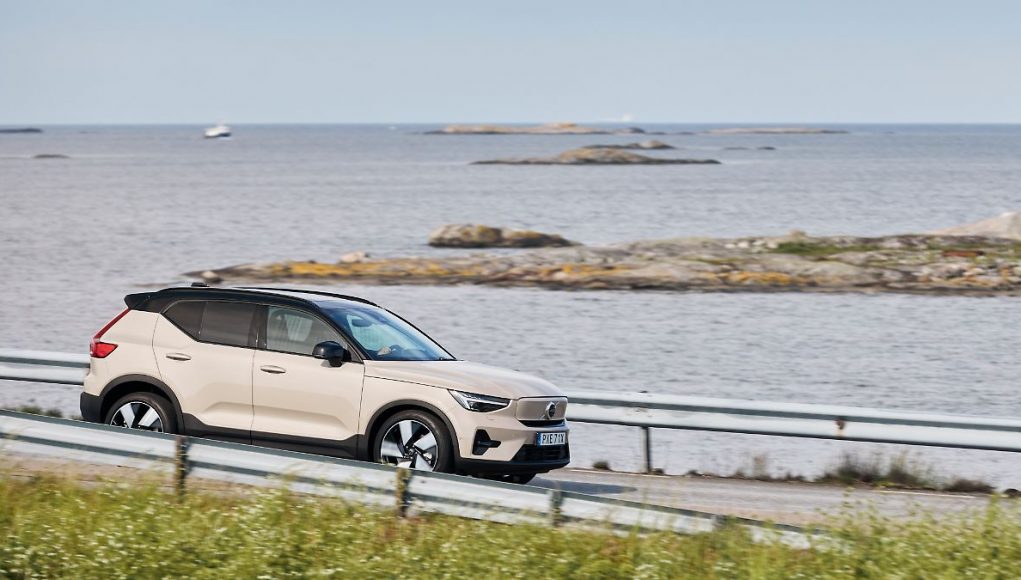When the compact Volvo XC40 came onto the market at the end of 2017, it was a much-noticed and stylish alternative in the segment. It is now part of the chic establishment. The latest version, now called the EX40, has more power.
Not only brand new cars have charm, but older ones too. We're not talking about classics, but simply about models that have been on the market for a while but are still up to date, or at least should be – because they still look attractive and/or because the manufacturer is constantly updating them. Of course, they lack the excitement of a brand new model, but you can rely on a certain level of maturity. The quality is good, and teething issues should have been ironed out. Quite a few new car customers appreciate something like that.


The new Sand Dune colour suits the compact car well.
(Photo: Volvo)
This is also the case with the Volvo XC40, er, in this case EX40. But before the Swedes adapted their nomenclature to the new Volvo naming principle (with the “E” for electric), the compact car received an update that went far beyond minor cosmetic changes. Because electricity does not just come from the socket and the end consumer has to pay for it, it was quickly determined that the lower middle class consumed too much energy, which then triggered criticism.
Less power consumption, more performance
The solution came from engineering. The technicians quickly replaced the motor on the front axle with an asynchronous motor, while the permanent magnet unit continued to work at the rear. The asynchronous motor generates less resistance when it is dragged along without power. The reduction in power consumption from up to 25 to under 20 kWh in the average WLTP discipline is already significant.


The electrically powered variant can still be recognized by the distinctive, closed radiator grille.
(Photo: Volvo)
Now the EX40 has a little more power. Those who want it can now be blasted towards the horizon by 441 horses (and 670 Newton meters of torque) – but it costs more than 16,000 euros extra compared to the basic model. This means that the 2.2-ton vehicle accelerates to 100 km/h in 4.6 seconds. It also means that the pressure on the back is enormous, enough punch to scare unsuspecting passengers. However, as with all Volvos, the top speed is 180 km/h.
Basic model also well motorized
On the other hand, the drivetrain is surprising with a slight delay in propulsion. Regardless of the driving program, maximum load is not immediately converted into full propulsion. It seems to take half a second for the software to pass on the command from the right foot, and only then is it full speed ahead.


The interior shows that the EX40 is showing its age. The monitor looks small by today's standards and not particularly exciting from an architectural point of view.
(Photo: Volvo)
If you don't care about high performance, you can live with the basic version. With 238 hp, it's not exactly underpowered (7.3 seconds to 100 km/h). And Volvo is asking a base price of 48,990 euros for this. Still a lot of money, but of course also a lot of value. Because some of the features are already included in the base price. These include LED headlights, navigation, parking sensors and a rear view camera.
However, you can tell that the Volvo is a compact car. The interior dimensions are limited, just like the exterior dimensions. Do you feel uncomfortable? That would be an exaggeration, but the Swede is more like a tailored suit than wasteful sweatpants. The customer might well start to think twice about this, given the price.


The trunk volume of the 40 series is rather meager at 410 to 1286 liters.
(Photo: Volvo)
The EX40 also struggles when it comes to the look and feel of the interior. Yes, the workmanship is generally OK, apart from the glove compartment lid – with its slightly sharp edges and flimsy plastic. Really, Volvo?
Lush armchairs ensure driving comfort
At least the seats are above average for the class and offer a decent level of driving comfort. The premium claim is once again met here. However, the infotainment system shows that the Scandinavian car is already a few years old.
The display looks like it's from another era, with a sufficiently good resolution and at nine inches not impractically small, but architecturally it's not as cool as is usual today. Even within the company, things are different now, as the EX30, which is one class lower, shows.
Since Volvo is moving firmly towards electric drive, it should also be mentioned that improvements have also been made in terms of charging performance. The manufacturer states a peak charging power of 180 kW for the version with a 67 kWh (net) battery and even 205 kW for the versions with a 79 kWh net capacity. The charging increase from 10 to 80 percent should take place in 26 or 28 minutes respectively. And the WLTP ranges are in the range of at least 435 kilometers with a small battery up to 576 kilometers with a large battery.
Where is the journey going?
In the end, the question arises as to what will happen to the compact class Volvo in the medium term. The fact that the company is now also coming out with special edition models (Black Edition from 55,590 euros) could at least be an indication that the remaining lifespan of the model series is manageable. The age of around seven years also speaks in favor of this.
The manufacturer has already removed the plug-in hybrid models from the configurator, mild hybridized combustion engines are currently still available for at least 42,490 euros. In general, the scope for haggling should now be greater, perhaps the local dealer has a good offer in store.
If you don't like the plain SUV, you can go for the four-door coupe (same segment) called the EC40, starting at 51,690 euros. However, this one comes with an electric drive. The other body variant is likely to suffer the same fate before it is finally discontinued.
































